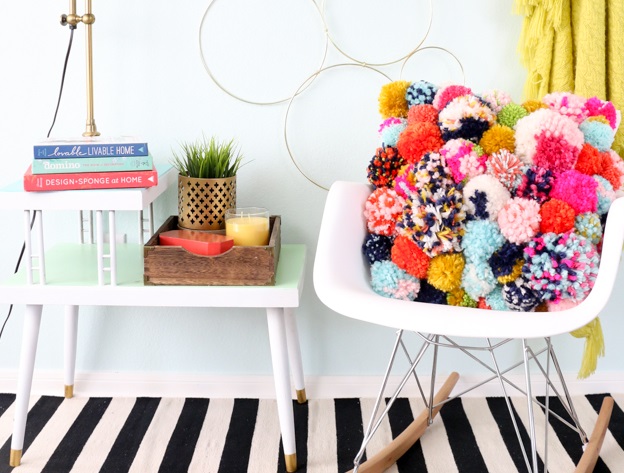How To Cover Damaged Walls (13 Stunning Ideas)

Damaged walls can be caused by various factors, including water damage, fire damage, holes or cracks left behind after removing fixtures, and other structural issues. Whatever the cause may be, covering up damaged walls is often necessary to restore your home’s appearance and safety. Fortunately, there are many ways to cover up damaged walls that can give your home a fresh new look or make it safer to inhabit. This guide will discuss the best methods on how to cover damaged walls and offer tips on ensuring you complete the job correctly.
I’m an extremely frugal person. Whether I should be proud of this or not is up for debate. But, I feel like there are many ways to live with style, whether you have a good budget to work with or not.
Growing up in a household that only scraped by for many years, I understand what it’s like to have very little to work with. But, my parents were resourceful and creative, which is why they were always able to improve our home in some way or another.
It is probably through their example that I took an interest in DIY and home improvements. Once you set your sights on improvement, there’s always a way to get what you want.
I want this blog to be a place where anyone can find useful tips on how to decorate and improve their homes.
With that being said, in today’s article, I’m going to share a ton of ways to cover damaged walls with or without a budget.
Table of Contents
Ways To Cover Damaged Walls
Depending on what type of wall damage you are trying to cover, the materials needed will vary. It’s important to research what type of material is needed before attempting any wall-covering job.
1. Paint

Painting is one of the most popular methods for covering up damaged walls and restoring their appearance.
Use quality paint that can stand up to wear and tear over time.
To properly apply paint, start by filling any holes or cracks with spackle or wood putty, then sand them down until they are smooth. Once the walls have been filled, you can begin applying primer followed by two coats of paint, allowing each coat to dry before applying the next.
If you’re up for it, don’t just stop there.
You can turn a damaged wall into a feature wall by choosing a contrasting but stunning color that separates it from the remaining walls.
2. Drywall and Cement Boards
For smaller repairs or renovations involving damaged walls, drywall or cement board should be used as the base layer over which other materials will be applied. Drywall is easy to install and relatively inexpensive compared to other materials that cover damaged walls.
However, it’s important not to skimp on quality when purchasing drywall, as it needs to be strong and durable to withstand whatever wall covering will be applied on top.
Cement board is a bit more expensive but can also be used in place of drywall and is great for bathrooms or other areas where water damage may occur.
3. Wallpaper
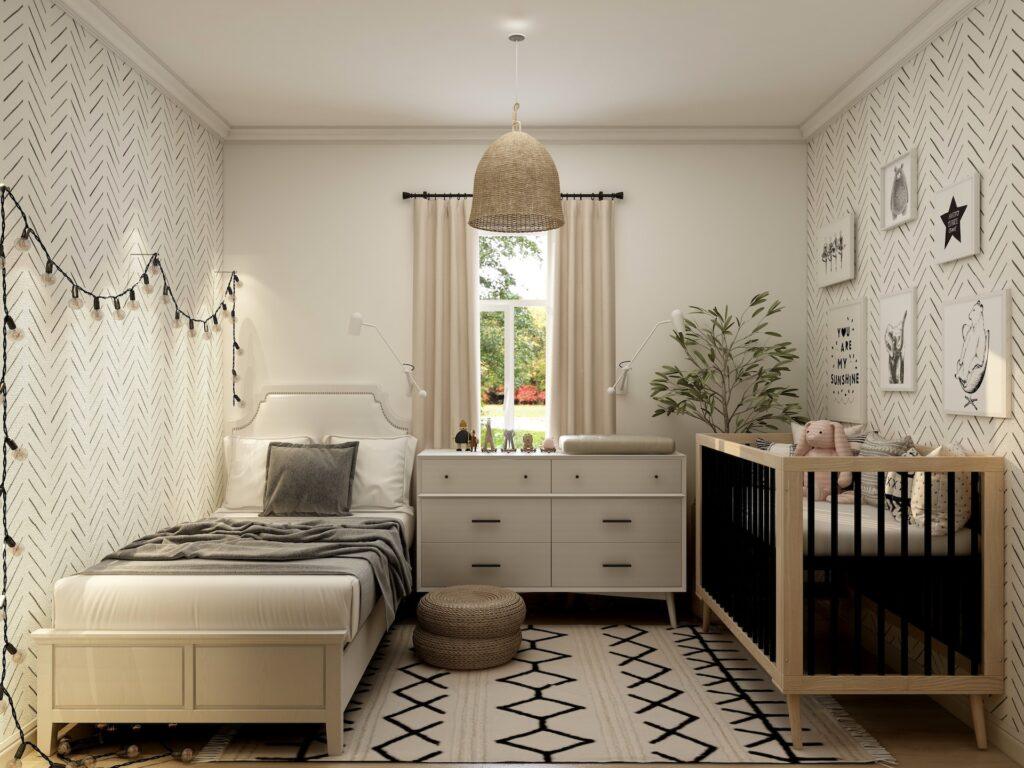
Another popular way to cover damaged walls is with wallpaper. Wallpaper can give your home a unique look and can be found in various colors and prints to fit any style.
Before applying the wallpaper, ensure that your walls are clean, dry, and free from dust or debris.
You will also need to purchase a special adhesive for hanging the wallpaper, which should be applied evenly over the entire area before hanging each strip.
What I like about wallpaper is that it’s easily available, affordable, and easy to install. So, if you want to cover damaged walls by yourself, this is one of your best options.
4. Tiles
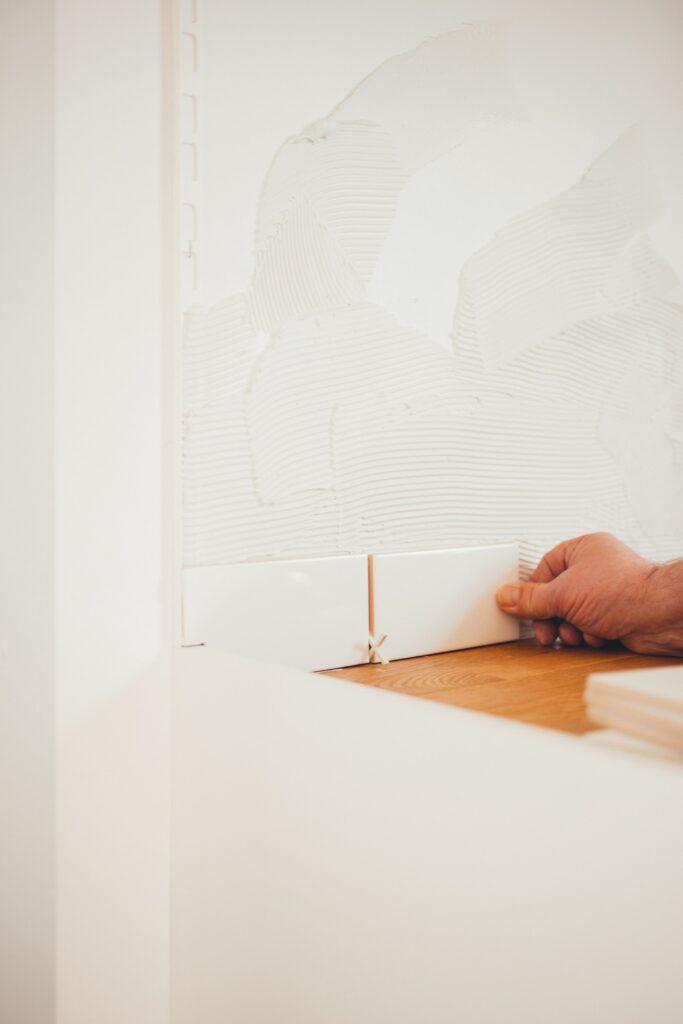
Tiling is another great way to cover up damaged walls as it not only looks good but also increases durability and ease of cleaning wet areas such as bathrooms or kitchens.
If you choose to tile your walls, you’ll need tiles, grout, and a tile adhesive to attach them securely.
Before tiling, ensure the walls are free from debris and dust. Once the materials have been gathered, you can begin laying the tiles in whatever pattern you desire.
When it comes to tiling, you have to be prepared to measure the wall, cut tiles for corners and position your tiles with the appropriate distance between each tile. Once completed, you can fill in those spaces with the appropriate color grout.
If you’re not experienced with tiling, it’s best to utilize the services of a professional who can complete the job for you within a day.
5. Paneling
Panelling is a great choice if you’re looking for a more modern look. Panelling can be found in various materials, including wood, plastic, and metal.
Before installing the panels, ensure holes or cracks are filled with spackle or wood putty and sanded down until smooth.
Once the walls have been prepped, you can begin attaching the panels following the instructions on the packaging.
6. Mirrors
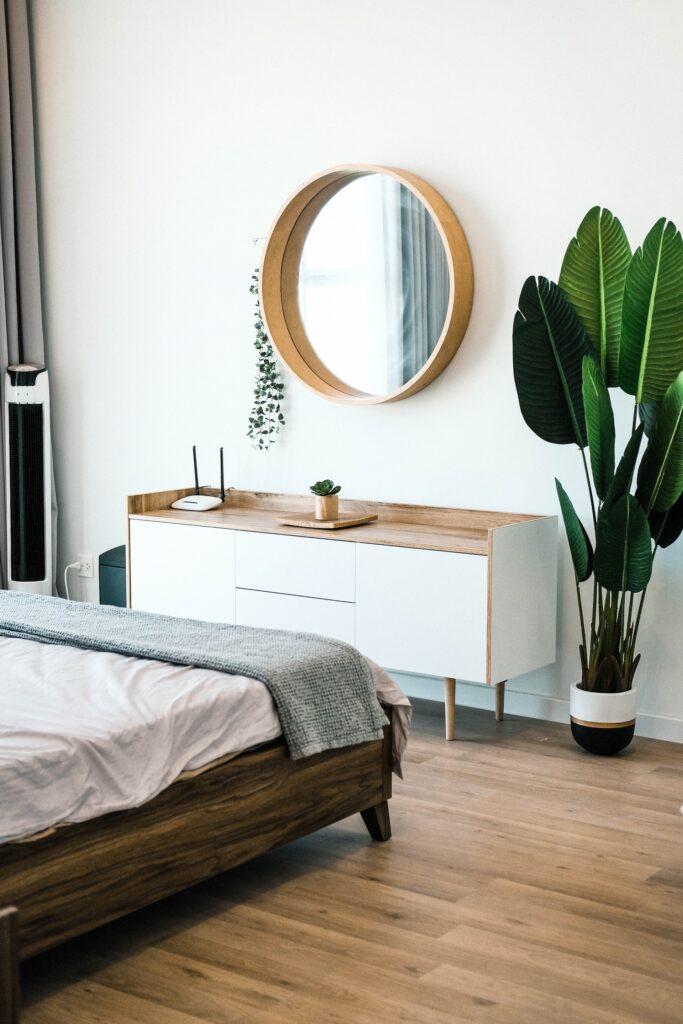
In the event that only one portion of your wall is damaged, you could cover the damaged wall with a mirror that serves as a feature piece.
I find this to be a great solution if the damage is centralized to your wall or towards one or both corners.
You could mount a large mirror onto the wall that is large enough to cover any damage or you could get smaller matching mirrors to cover smaller damage around the wall.
7. Book shelf
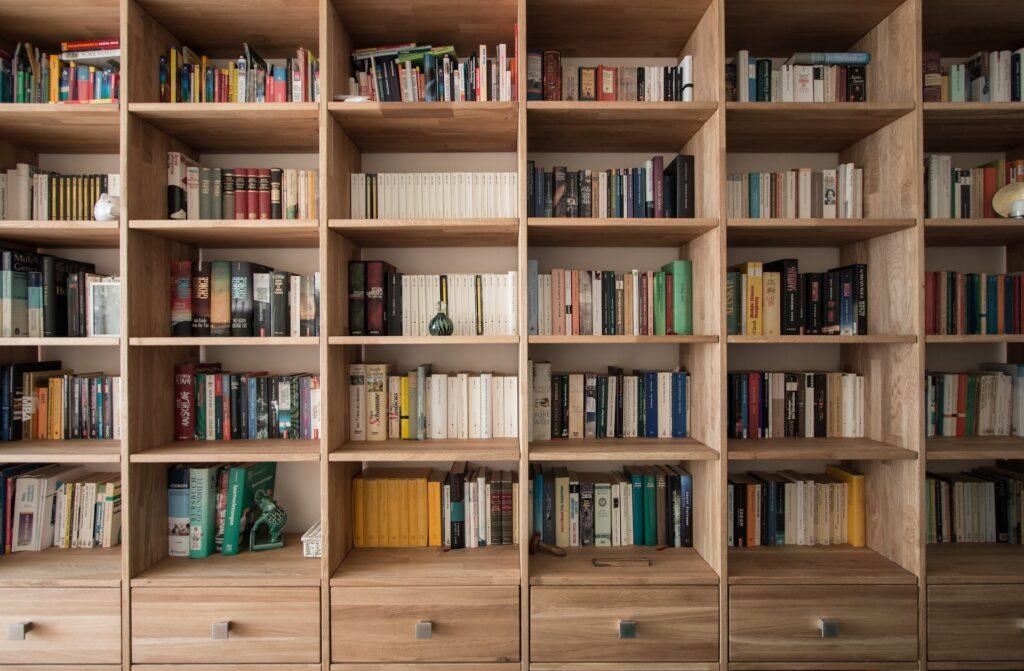
If you have the room for it and would like to add a piece of furniture that can fit into almost any room, why not opt for a bookshelf.
It’s large enough to cover a significant area of the wall while providing a storage facility for all your books and momentos.
What was meant to serve as a covering for damaged walls can become a feature piece displaying your stunning collection of books.
8. Floating shelves
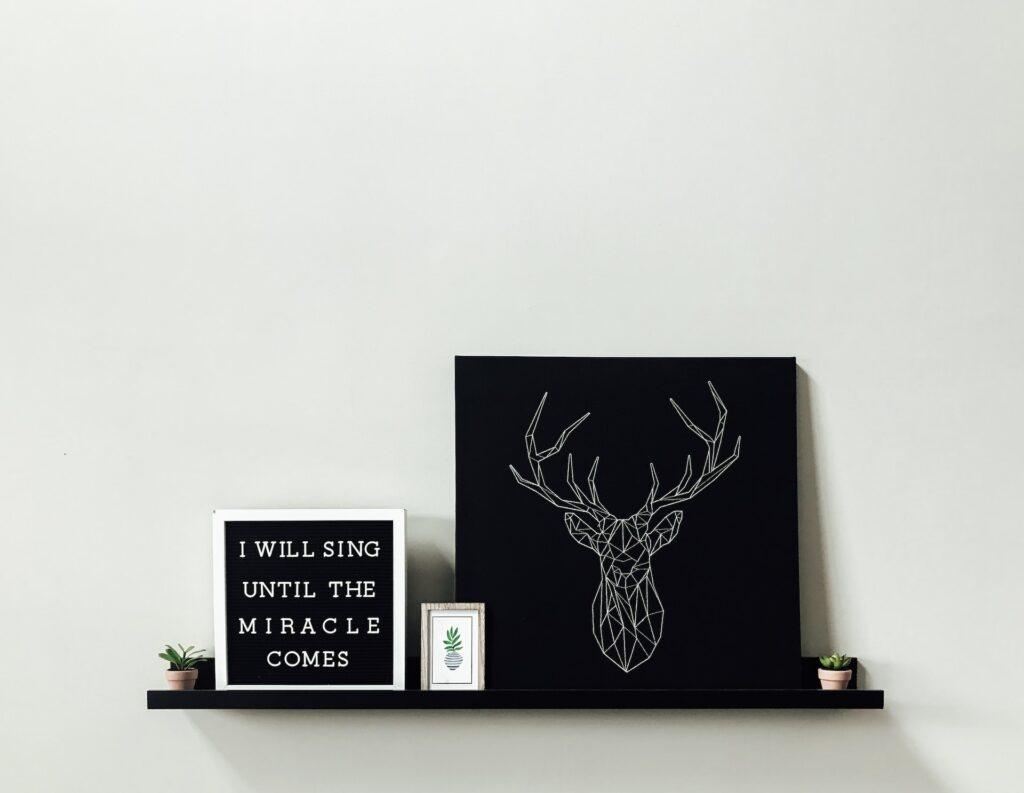
Another way to cover damaged walls comes in the form of floating shelves.
Shelves themselves are quite slim. On their own, they won’t cover much damage. But, if you use them as display shelves to show off cool accessories, momentos, picture frames, and plants, you could cover a lot of damage.
It’s extremely affordable and you can install shelves by yourself if you have a screwdriver, drill, measuring tape, and hammer.
With floating shelves, you want to install a couple of them to create a cohesive pattern that covers most of the damage.
9. Paintings

To save yourself the trouble of doing any work on the wall while covering it with ease, you could opt for large paintings.
This is a common wall decor item that works in every home.
In fact, you could find large printed paintings from normal decor stores for under $50 that liven up your entire room while covering up any damage on the walls.
10. Picture frames
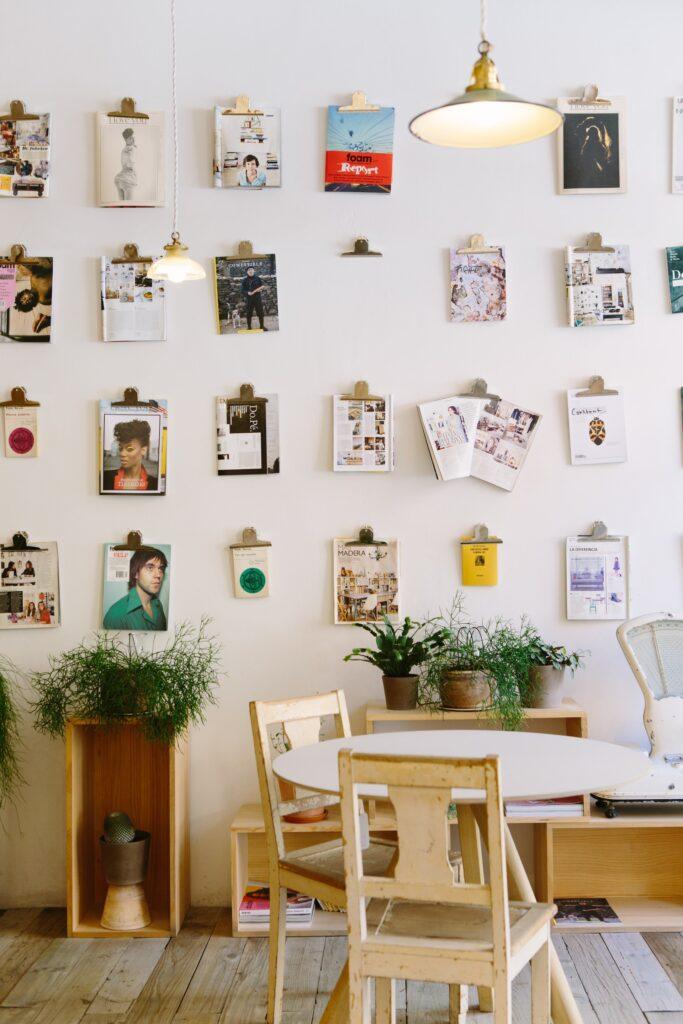
Transform a damaged wall with stunning picture frames holding special photographs of your family and friends.
They’re relatively cheap and easy to install, making them a suitable solution for anyone.
Alternatively, you could opt for hanging photographs attached to string lights that cover your entire wall from one corner to the other.
The only downside is that it may not cover all the damage on the wall and is a temporary solution.
11. Hanging plants

I’m a huge fan of greenery at home. Not only does it clean the air, but it also adds color, beauty, and life to any room.
What I’ve seen some people do is hang loads of plants and vines to create a feature wall.
In some cases, these plants and vines are real but for practicality reasons, plastic plants and vines tend to be a better option.
They don’t require any maintenance, nor do they wither with age.
12. Stucco
Succo is great for covering damaged walls as it offers a long-lasting, durable finish.
Stucco can be applied over drywall or cement board and requires special tools such as trowels and brushes.
Once the material has been mixed, you’ll need to apply it in layers and allow each layer to dry before applying the next.
13. Cork board or Chalkboard
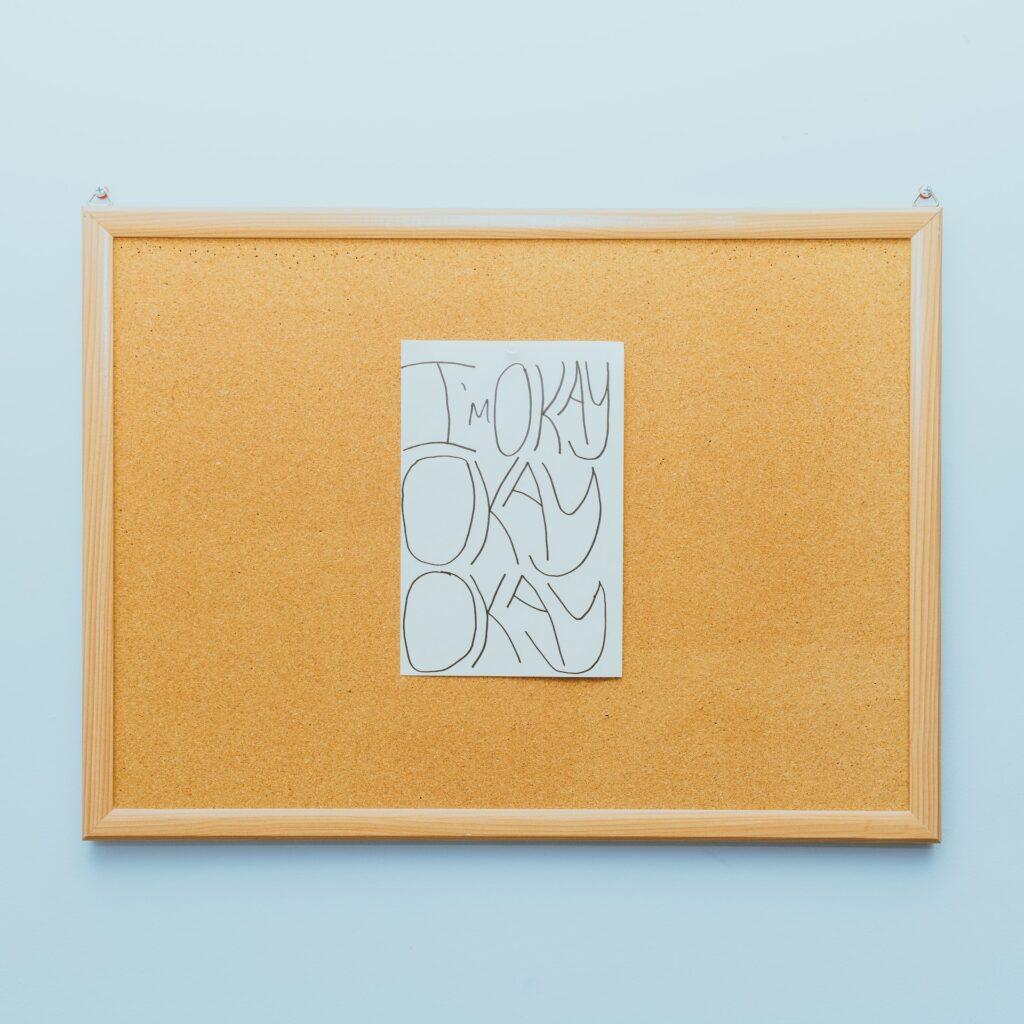
One of the solutions I used in my bedroom was to install a massive cork board to conceal a damaged wall.
What I liked about this was the practical use that came from this solution.
I was able to turn this cork board into a planner, calendar, and reminder that helped with my ability to be organized and productive.
At its best, this cork board turned into a massive vision board with pictures of everything I wanted for myself along with motivational quotes to inspire me.
Anyone who entered my bedroom admired this vision board and always complimented me for being so creative.
If not a cork board, you could get a chalkboard or white board, depending on which is available and preferred.
Tips For Covering Damaged Walls
Once you have chosen your desired method for covering damaged walls, there are some important tips you should keep in mind:
- Make sure all materials used are of good quality and appropriate for the job. Poorly made materials may only last for a short time or provide adequate protection.
- Allow adequate time for the wall covering material to cure before hanging any pictures or other items on the walls. This will help ensure that your walls remain in good condition.
- Sand down any rough areas or fill holes and cracks before applying the wall covering material. This will create a smoother surface, allowing for better adherence to the material and longer-lasting results.
- Get a professional to examine the damage to ensure that you can opt for a cheap solution without concern of structural damage over time.
- Ensure that the option you choose makes sense. Don’t waste money on a temporary solution that costs almost the same amount it would cost to permanently repair the damage
As long as you plan this carefully, you should be able to cover damaged walls with ease and for a relatively good amount of time before needing to address the issues again.
Final Thoughts
Covering damaged walls may seem like a daunting task, but with the right materials and a bit of patience, it can be done.
With so many options available, you can find something to suit your needs and budget. Whether you choose to paint, wallpaper, tile, paneling, paintings, mirrors, shelves, or stucco, make sure that all materials are of good quality and allow adequate time for the wall covering material to cure before hanging any items on the walls.
These tips will help ensure that your walls remain in great condition for years.
With that being said, if you enjoyed this extensive article on how to cover damaged walls, check out some of our other decor ideas that are affordable and stunning:

